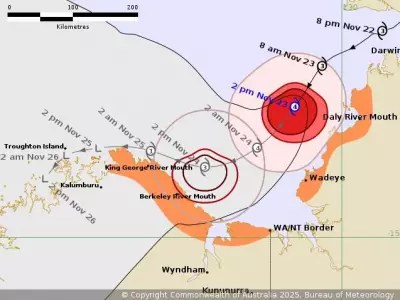
The Science of Sound: From Barking Dogs to Volcanic Blasts
If you've ever been annoyed by a neighbour's barking dog, you've experienced a significant noise event. A dog's bark can easily hit 80 decibels, with some powerful yaps reaching an ear-ringing 100 decibels. Considering that sustained exposure to sounds above 70 decibels can cause permanent hearing damage, it's wise to limit your time around such clamour.
Nature's Roar and Rock's Decibels
By that standard, you would not want a howler monkey for a neighbour. These creatures can generate a staggering 140 decibels with their howls, which can carry for nearly 5 kilometres. The decibel scale is logarithmic, meaning a 140-decibel monkey is vastly more than twice as loud as a 70-decibel dog; a 10 decibel increase sounds roughly twice as loud to human ears.
This intense volume isn't exclusive to the animal kingdom. The legendary Australian band AC/DC cranked their amplifiers to 130 decibels during their 1980 Back In Black tour. That record was later shattered by the band Kiss, who hit 136 decibels at the 2009 Ottawa Bluesfest.
While there might be a perverse pleasure in such volume, the consequences are no laughing matter. Hearing loss is permanent, and many musicians from these loud bands have faced the music, forced to turn down the volume for the sake of their health.
The Upper Limits of Sound
These concerts, however, were quiet compared to experiments at the SLAC National Accelerator Laboratory. In 2019, scientists there created the loudest sound ever recorded by blasting x-rays at tiny water jets, producing a shockwave that reached an incredible 270 decibels.
Yet, even this pales in comparison to historical events. The 1883 eruption of Krakatoa is generally considered the loudest sound in recorded history. The cataclysmic explosion, which caused a devastating tsunami, is estimated to have produced 310 decibels. This would have been dwarfed by the asteroid that struck the Yucatán Peninsula 66 million years ago, though its exact decibel level remains unknown.
This exploration leads to a fascinating scientific question: is there a physical limit to how loud a sound can be? The answer depends on how we define 'sound,' as the physics change dramatically at a certain threshold. Sound typically refers to oscillating particles travelling through a medium like air, which behaves elastically. But just like a rubber band stretched too far, air can 'snap.'
This breaking point for sound travelling through air is 194 decibels. Beyond this level, the pressurised sound wave ceases to be a mere oscillation and transforms into a powerful shockwave. The principle is similar in water, but because water is denser, the limit is higher. While a Sperm Whale can produce clicks of around 200 decibels, the theoretical limit in water is thought to be 270 decibels.
The Fuzzy Logic Science Show airs at 11am Sundays on 2xx 98.3FM. Send your questions to AskFuzzy@Zoho.com; Podcast: FuzzyLogicOn2xx.Podbean.com





